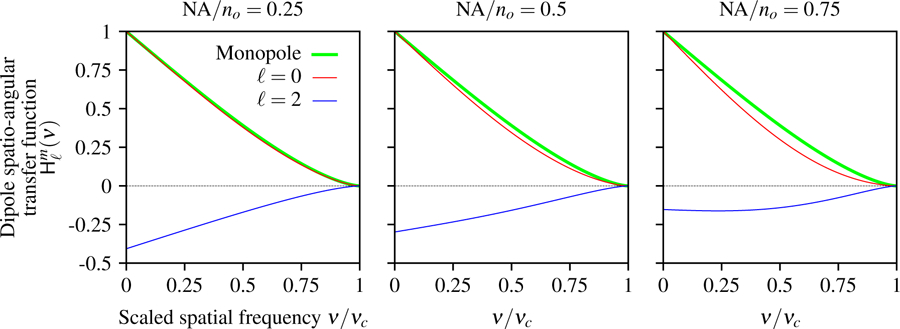Fig. 9.

Spatio-angular dipole transfer function as a function of the scaled spatial frequency ν/νc, the spherical harmonic degree ℓ, and NA/no. When the numerical aperture is small the transverse dipoles contribute the most to the signal which gives rise to a positive ℓ = 0 component and a negative ℓ = 2 component. As the numerical aperture increases, the relative contribution of axial dipoles increases and the ℓ = 2 component becomes less negative. Additionally, we plot the monopole transfer function (green) and observe that the ℓ = 0 term is similar but not identical to the monopole transfer function, and this discrepancy increases with the numerical aperture.
